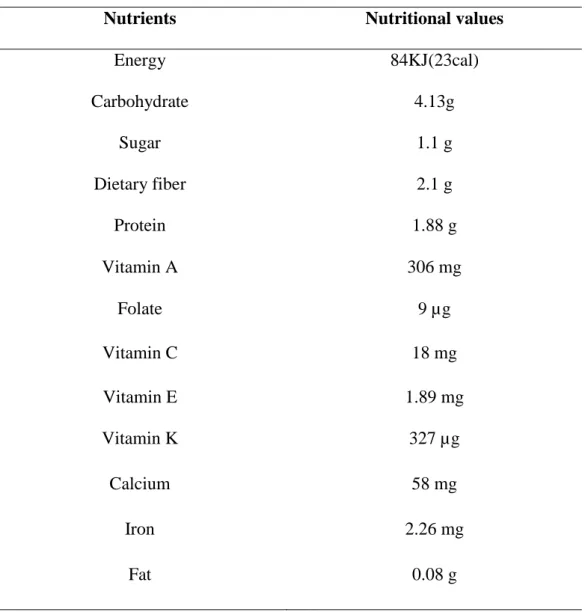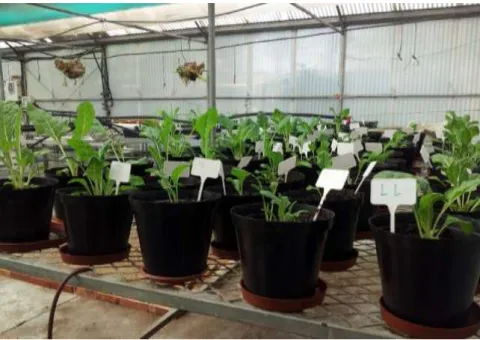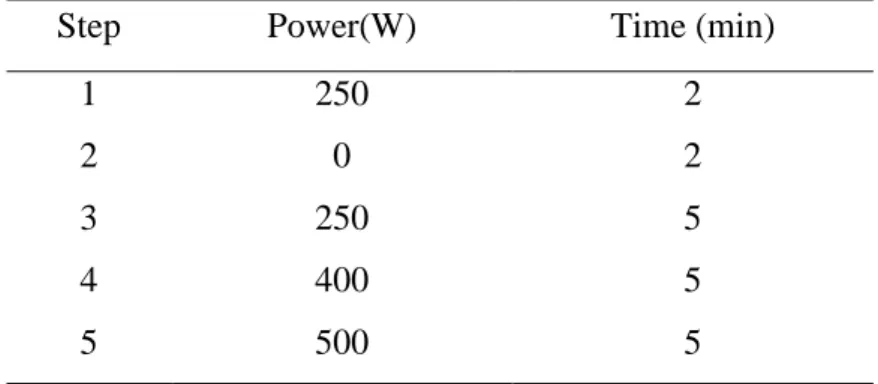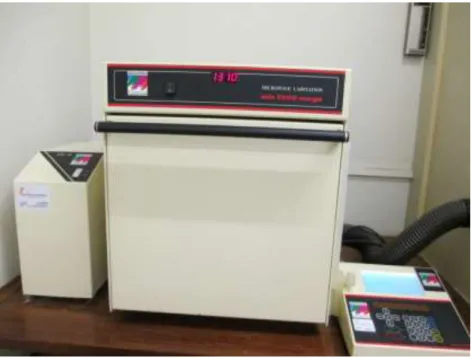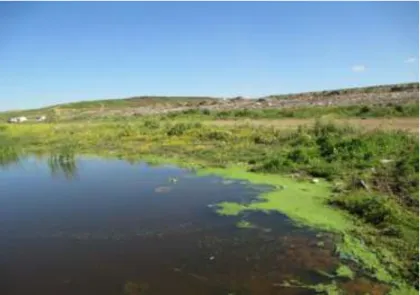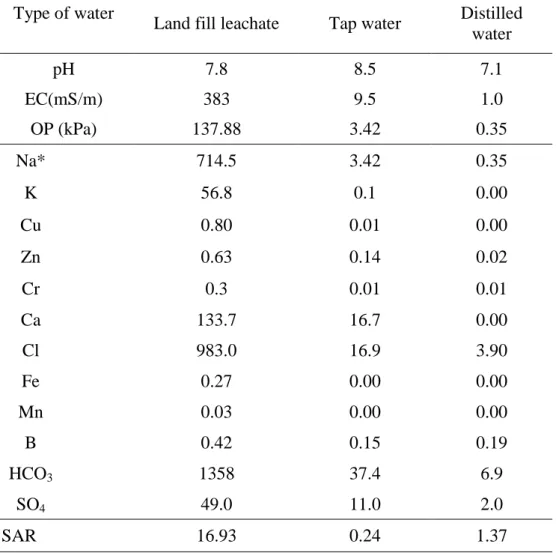I declare that the “Influence of Leachate from Landfills on Swiss Chard Growth Response and Mineral Content is a dissertation generated from my own work, that it has not been submitted for a degree or examination at any other university, and that all sources I have used or cited are indicated and acknowledged by full references. Over several weeks, the experimental soil and Swiss chard leaves were analyzed to assess the rate of change in various chemical compositions after irrigation. The application of leach water in irrigation resulted in increased cation concentrations in the soil, especially those of Na ions (increased sodicity).
Soil metal concentrations were low and there were no significant differences in soil heavy metal concentrations between leachate-irrigated and control soils. This reduction in growth is best attributed to the high cation content of the plant tissue obtained from the soil, which was high in cations as a result of leachate irrigation. To my colleagues in the Department of Chemistry, Cape Peninsula University of Technology, South Africa, I thank you for the good and cordial working relationships I have had during my studies.
Heavy metals
Landfill
Leachate
Composition of Leachate
11 Change in the concentration of Ca in chard leaves during the second, fifth and eighth week of the experiment. 24 Table 4.1 Characteristics of leachate, tap water and distilled water used in the pot experiment..29 Table 4. 33 Table 4.4 Content of trace metals in soil under irrigation with different concentrations of leachate, tap water and deionized water.
34 Table 4.5 Trace metal content of Swiss chard leaves during irrigation with different concentrations of effluent, tap and deionized water. APPENDIX 1: CALIPRATION RESULTS OF MICROWAVE CURVES OF ATOMIC EMISSION SPECTROME………..56 APPENDIX 2: RESULTS OF RELEASE………..60 APPENDIX3: RESULTS OF EARTH SPEED ANALYSIS..68 SCOPY (EDS )... ....30.
INTRODUCTION
- Background
- Statement of research problem
- Research questions
- Assumptions
- Delimitations
Therefore, this study will evaluate the use of leachate from landfills as a potential source of water for irrigation purposes and determine the degree of uptake of essential elements and trace elements from Swiss chard (Beta vulgaris var. cicla), irrigated with such leachate from landfills. The effect of landfill leachate on the properties of the soil must be assessed, as well as the effect on the growth and nutrient composition of cultivated crops. Is there any significant difference in growth response and mineral content of Swiss chard when different types of water landfill leachate, tap water or distilled water are used for irrigation.
Investigate the effect of landfill leachate on soil chemical properties and assess growth response in Swiss chard (Beta vulgaris var. cicla) species. Study the potential physiological impact of leachate pollutant uptake on Swiss chard leaf cells. The effect of landfill leachate was studied only on the Swiss chard species used for the trial and not on any other vegetable crop.
LITERATURE REVIEW
- Leachate generation and composition
- Introduction
- Stabilization processes in landfills
- Leachate Composition
- Leachate irrigation
- Effects of leachate on plant growth
- Effects of leachate salts on soil
- Effects of leachate salts on plants
- Salt stress symptoms in plants
- Examples of studies using leachate as irrigation systems
- Swiss Chard
- Origin and distribution of Beta vulgaris
- Nutritional profiles of Beta vulgaris and effects on health
Most of the leachate produced is the result of moisture released during compaction of the waste (Kjeldsen et al., 2002). The onset of the third stage begins when measurable amounts of methane are produced (Kjeldsen et al., 2002). The increase in pH allows the growth of methanogenic bacteria whose growth is restricted in the acidic conditions of the acidic phase (Kjeldsen et al., 2002).
The dissolved organic matter content of landfill leachate is usually expressed as biological oxygen demand (BOD), chemical oxygen demand (COD) or total organic carbon (TOC) (Kjeldsen et al., 2002). Sulfate concentrations are lower due to the microbial reduction of sulfate to sulfide (Kjeldsen et al., 2002). The sodium adsorption ratio (SAR) is used to quantify the salinity of the irrigation water and the exchangeable sodium percentage (ESP) is used to quantify soil salinity (Balks et al., 1998).
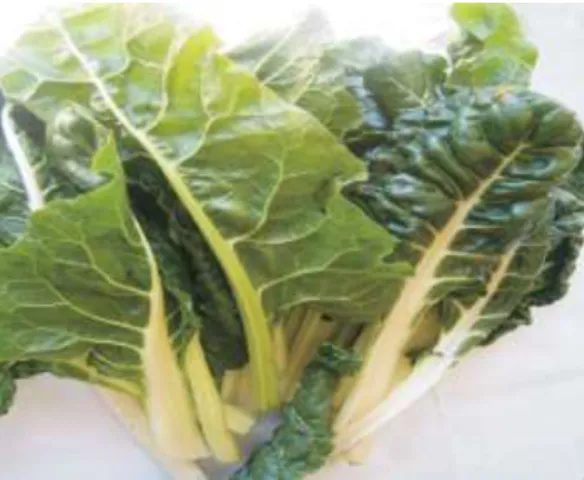
MATERIALS AND METHODS
- Cleaning of glassware
- Materials
- Leachate collection
- Experimental procedure
- Preparation of pot experiment and trial management
- Soil sampling
- Swiss chard sampling
- Sample preparation for the analysis
- Soil samples
- Swiss chard samples
- Instrumentation
- Microwave plasma-atomic emission spectrometer (MP-AES)
- pH meter
- Scanning electron microscopy (SEM)
Each pot was filled with potting soil and placed in a greenhouse located in the horticulture department nurseries on the Bellville campus. Treatments (leachate and controls) were applied daily at regular intervals throughout the duration of the experiment. Swiss chard leaf samples were collected from each treatment in appropriately labeled brown paper bags for tissue analysis.
Three chard leaf samples were collected in triplicate every week in each treatment over a period of two months to investigate the trend of possible nutrient accumulation over time. The soil was thoroughly mixed to achieve homogeneity and then dried in a dryer at 60˚C until a constant weight was reached. After the soil was cooled, 1.0 g of dried soil was weighed and transferred to a 50 ml Phillips beaker.
Then the sample was cooled, filtered through Whatman GF/C filter paper, transferred to a 50 ml volumetric flask and diluted to the mark with distilled water. The Swiss beet leaves were dried in the oven at 60˚C until constant weight was reached. The dried leaves were ground in a mortar and pestle, 0.1 g of each sample was accurately weighed and transferred to a microwave digestion reaction vessel.
The vessels were placed in the carousel, digestion was performed by means of a temperature programmer (Table 1). Microwave plasma atomic emission spectrometer was used for all sample analysis to determine the concentration of metals in the samples. It has a higher resolution, it is more flexible in the number and selection of lines is stepless, automatic background correction, and it is safer because no combustible gases are required.
SEM was used to study the morphology of the samples of fresh leaves of Swiss chard to determine possible structural changes due to heavy metals and the result was compared with the controls.
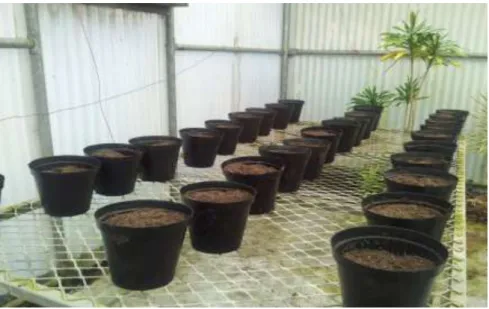
RESULTS AND DISCUSSION
Characterization of applied irrigation samples
- Effect of leachate, tap and distilled water irrigation on soil pH
- Effect of irrigation waters on electrical conductivity of the soil (EC)
- Effect of irrigation waters on the level of trace elements in the soil
- Effect of irrigation waters on the exchangeable cation content of the soil
- Effects of Salinity (EC) and sodicity on Soil Physical Properties
The results of the analysis showed that the pH ranged from very low (leach water) to medium (tap water) and neutral in the case of distilled water. The SAR and EC of leachate in the irrigation catchment were used to assess the salinity risk for leachate that was irrigated in potted soil. The concentration of boron in the three types of irrigation water was < 1 mg/l, which can be considered as a low risk.
This can be attributed to the high organic matter content of the vegetable processing waste that is deposited in the landfill. Organic matter present in the landfill can absorb significant amounts of metals and thus reduce their solubility (Kjeldsen et al., 2002). The sulfate in the leachate also contributes to the relatively low metal concentrations, as metal sulfide precipitates are easily formed during the methanogenic phase.
The possible reason for this observation may be due to the high concentration of monovalent and divalent cation contained in the effluent. Consequently, the high concentration of ions in soil runoff increases its EC. ANZECC et al., 2000), therefore the growth rate may be affected by the presence of salts in the 100% irrigation water treatment.
From the results of the analyzed pot soil, it was observed that there was an increase in zinc concentration for all treatments and the relative level of increase in contamination from irrigation water was in the order of 100% runoff >50%. The highest copper concentration was achieved in the 100% leachate irrigated soil (15.0 mg/kg) while the lowest was noted in the distilled water irrigated soils (4.50 mg/kg). The low accumulation of these trace elements is a result of their low concentration in the drainage.
Increased salinity in the soil from week two to week eight reflected increased salinity in the leachate, and the magnitude of the increase depends on the salt concentration in the leachate.
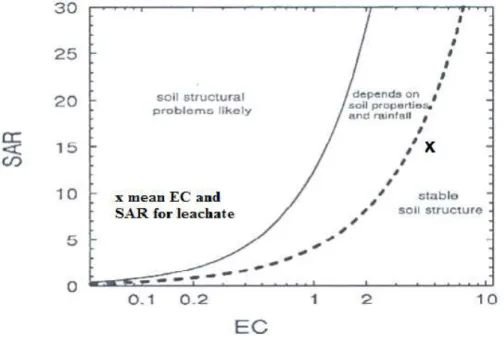
The effect of irrigation waters on test crop (Swiss chard) properties
- Change in the height of Swiss chard during the experimental period
- Effect of leachates, tap and de-ionized water irrigations on level of trace
- Effect of leachate, tap and de-ionized water on the exchangeable cation
- Effect of irrigation waters on ultra-structural leaves morphology of Swiss chard
The reduction in Swiss chard growth may be due to the high EC value (salinity) in the potting soil, which results from a high salinity of the leachate (Chiemchaisri et al., 2005). Irrigation with tap water and distilled water showed marked growth from 9.2 cm in the first week to ~38.3 cm in the eighth week of treatment. The illustration in Table 4.5 shows the concentration of copper, zinc and chromium in the Swiss chard leaves irrigated with different leaching concentrations and the two controlled water treatments during the experimental period.
The results show accumulation of these metals in the tissue of chard leaves with the highest concentration of and 2.50 mg/kg for Cu, Zn and Cr, respectively, after eight weeks of irrigation with pure concentrated leach water (100%). The results show a differential accumulation of the three cations in Swiss chard leaves during the experimental period (Figure 4.9-4.11). Sodium uptake by Swiss chard leaves clearly increased with time when leachate was used in irrigation systems, correlating with the concentration of this element in the leachate and ultimately in the soil.
Similarly, the Na, Ca and Mg concentrations also gradually increased in the leaf tissues of Chard when tap and deionized water was used for irrigation (Figure. High sodicity becomes a problem when enough salts accumulate in the root zone that crops are negatively This lowers the amount of water available to the plant, regardless of the amount of water in the root zone.
High salinity can also cause increases in epidermal and mesophyll thickness, and elongation of the palisade cell in the leaves. 9. Change in concentration of Na in Swiss chard leaves during the second, fifth and eighth week of the experiment. 10. Change in concentration of Mg in Swiss chard leaves during the second, fifth and eighth week of the experiment.
While chard leaf tissue irrigated with control water showed no changes in surface structure between the first and eighth weeks, an irregular surface with the presence of stomata.
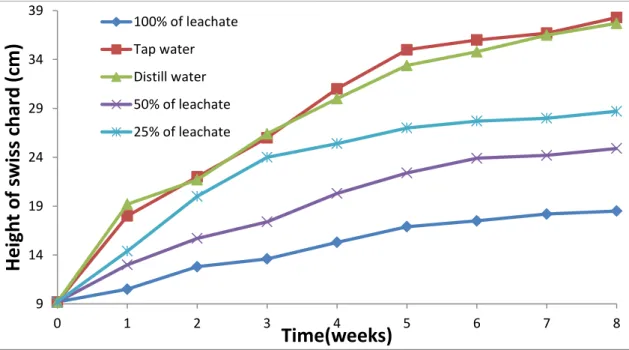
CONCLUSIONS AND RECOMMENDATIONS
Conclusion
Future work and recommendations
Chemical Characteristics of Leachate Contaminated Lateritic Soil, International Journal of Innovative Research in Science, Engineering and Technology, 2(4), pp.1000-1005. Spray Irrigation of Landfill Leachate: Estimating Potential Exposure to Workers and Bystanders Using a Modified Air Box Model and Common Source Term. A review of the effects of wastewater sodium on soil physical properties and their implications for irrigation systems.
An Analysis of Long-Term Leachate Characteristics at a Wisconsin Landfill, Proceedings of the Annual Madison Waste Conference, p. Use of forage grasses to decontaminate spray-irrigated leachate from a municipal sanitary landfill. Photosynthetic and growth responses of two broadleaf tree species to irrigation with municipal landfill leachate.
Field investigation of the quantity and quality of leachate from a municipal solid waste landfill in a Mediterranean climate.
